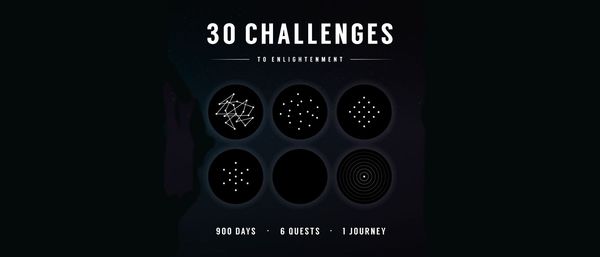Sam Thomas Davies • • 5 min read
Want to Learn a New Skill More Effectively? Redefine Your Identity!

In 1997, Professor Gary McPherson decided to investigate a mystery that had plagued parents and music teachers for centuries: Why do certain children progress quickly at music lessons while others don’t?
McPherson’s unorthodox approach to answering this question involved taking 157 randomly-selected children and tracking their progress using biometric tests, videotaping their practice sessions and interviewing them in detail. This long-term study would follow them from a few weeks before they chose their instrument to their high school graduation.
The children were asked a question before starting their first lesson (and one that, in hindsight, would reveal a lot about their motivation):
“How long do you think you’ll play your new instrument?”
In Daniel Coyle’s The Talent Code: Greatness Isn’t Born: It’s Grown, McPherson recounts his experience:
[The children] mostly said:
‘Uh, I dunno’ at first. But then when I kept digging and asked them a few times, eventually, they gave me a real solid answer. They had an idea, even then. They’d picked up something in their environment that made them say: ‘Yes, that’s for me’. [1]
The children were asked to identify how long they planned to play their instrument for. The options were: through this year, through primary school, through high school or all my life. Their answers were then condensed into three categories:
- Short-term commitment
- Medium-term commitment
- Long-term commitment
McPherson then measured how much each child practised per week: low (20 minutes per week), medium (45 minutes per week) and high (90 minutes per week).
He plotted the results against their performance on a skill test. The resulting graph looked like this:

As evident from Figure 1, with the same amount of practice, the long-term commitment group outperformed the short-term commitment group by 400 percent. The long-term commitment group, with a mere twenty minutes of weekly practice, progressed faster than the short-term commitment group who practiced for an hour and a half.
In other words, when long-term commitment was coupled with high levels of practice, the children’s development went through the roof.
Read: 7 Scientific Lifehacks for Building New Habits and Making Them Stick
The Motivation for Long-Term Commitment
What was the difference that made the difference? Was it their I.Q.? Aural sensitivity? Math skill? Sense of rhythm? Sensorimotor skills? Their parent’s income?
Hardly, in fact their progress was determined, not by any of the above, but by a tiny, powerful idea the children had before they even started their first lesson: how they perceived themselves. Their self concept had the biggest impact on their skill acquisition.
McPherson comments:
We instinctively thought of each new student as a blank slate, but the ideas they brought to that first lesson were probably far more important than anything a teacher could’ve done, or any amount of practice. At some point very early on they had a crystallizing experience that brought the idea to the fore that said, ‘I am a musician’. That idea was like a snowball rolling downhill. [2]
The Problem with Goal-Setting
It’s popular in personal development to enforce the importance of goal setting, particularly, writing down your goals and reading them aloud, daily.
But this isn’t enough.
If you don’t even believe you’re the kind of person who can achieve the goals you’ve set, then no amount or reading them aloud, daily (or any other recommended practice) is going to inspire you to take action.
If you want to learn how to commit to your goals in the long-term, you have to develop an identity that drives the behaviours you need to achieve them.
This is what the long-term commitment children did. They believed they would play their musical instrument for the rest of their lives (regardless of whether that was true or not).
They didn’t perceive themselves as children playing musical instruments as an extra-curricular activity – they perceived themselves as musicians.
How to Create a New Identity
Your identity is who you are. This is not to be left to other people’s judgements, it’s to be left to your own. You’re not defined by your appearance, your job description or your past. In any moment, you can redefine who you are.
This is done by:
- Defining who you want to be (“I’m a musician”).
- Taking action and creating reference points that justify your new belief. (“I am a musician because I practice every day”).
When we think of taking action, we often think of it having to be big, but it doesn’t have to be, in fact, the smaller the better. Why? Because small actions don’t intimidate us to start and therefore are easier to do – consistently. When you consistently take action, you create more momentum and it’s easier to move towards your goals.
It’s common to define who you are by saying: “I am”. If you look at any “I am” preface you use to describe who you are, it will often connote a lot about what you do as well. A good rule of thumb to use is: (1) associate “I am” prefaces to positive behaviours you want and (2) disassociate “I am” prefaces from negative behaviours you don’t want.
For example, if you goal is to run a marathon: “I am a runner, therefore I run” is better than: “I am training to run a marathon, therefore I have to run” (notice how “have to” makes it sounds like a chore?). When a behaviour is linked to your identity, it drives your behaviour.
Conversely, if your goal is to learn how to break a bad habit and replace it with a better one, it’s better to dis-identify with a negative behaviour. For example, “the last diet I tried failed” is better than “the last diet I tried failed, therefore I am a failure”. [3]
It’s funny: When you redefine who you are with a new, empowering “I am” preface, you feel the need to take action: failure to do so would mean you’re a liar (and no one wants to be a liar). When you decide: “I am a musician” you have no choice but to make music.
Here’s are a few more examples:
If your goal is to write a book, you’re a writer, therefore you write.
If your goal is to lose 14 pounds, you’re a healthy eater, therefore you eat healthy (doesn’t this have a better connotation than “dieter” or “weight-watcher”?)
If your goal is to attract a romantic partner, you’re a catch, therefore you aren’t afraid to date – you want to find that person who will treat you like one.
In all these examples, if all you did was act in accordance with your new identity, you would take action and the desired outcomes would be inevitable.
You may argue: “But I don’t believe that about myself”. That’s okay, put the word “yet” on the end of it – that’s presupposes you will. Remember, all you need to do is focus on taking small actions, this is what will begin to strengthen your new belief.
The question is, who are you and what action do you need to take, now?
Sources
[1] Coyle, D. The Talent Code: Greatness Isn’t Born: It’s Grown. New York: Bantam, 2009. Print.
[2] The quotations have been re-written in past tense (rather than present tense) to better fit the narrative flow of the article.
[3] I don’t believe in the word “failure” because I believe all failure is feedback. I used the word failure because it’s a popular example of people linking a behaviour to an identity.
This post was originally published on www.samuelthomasdavies.com










